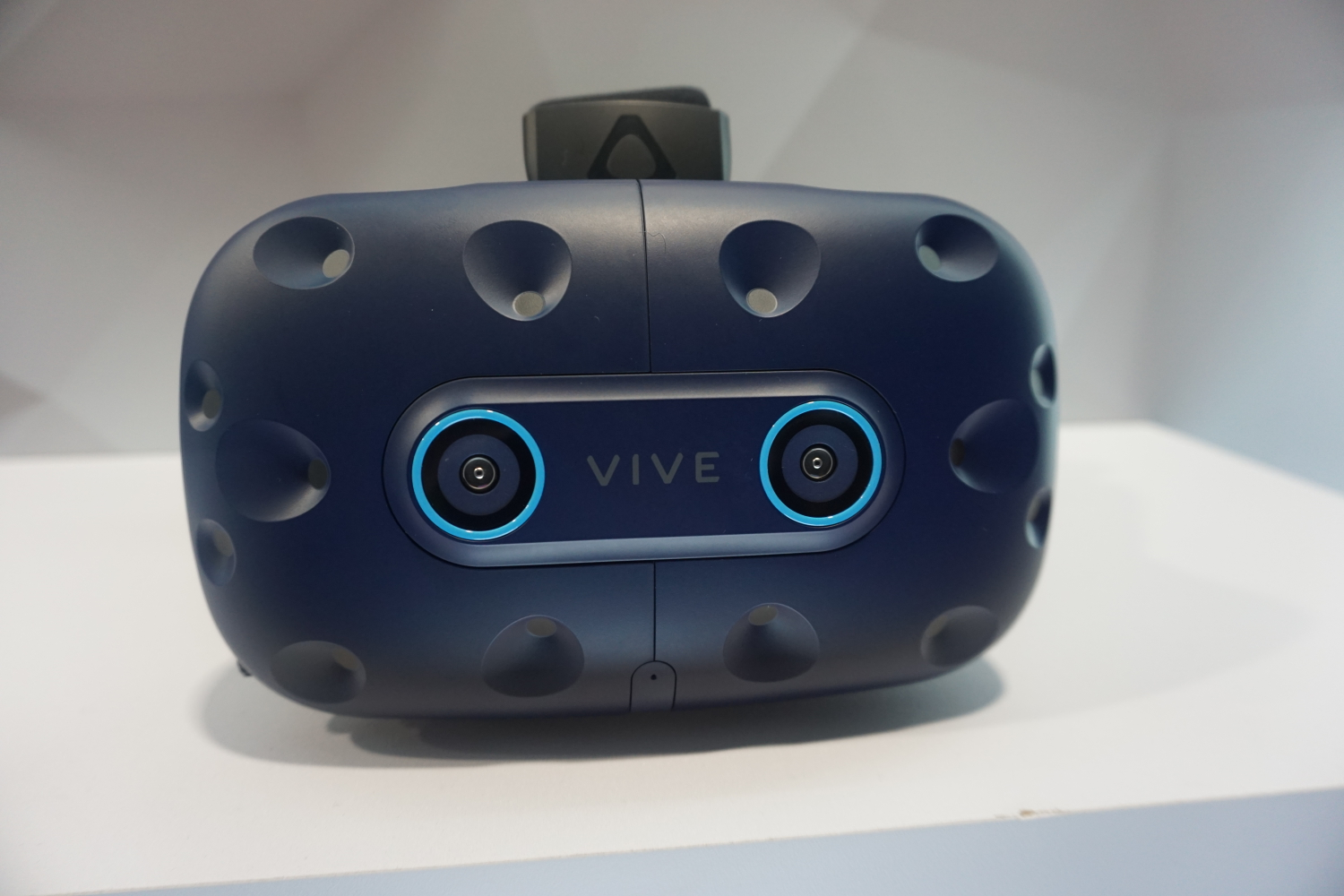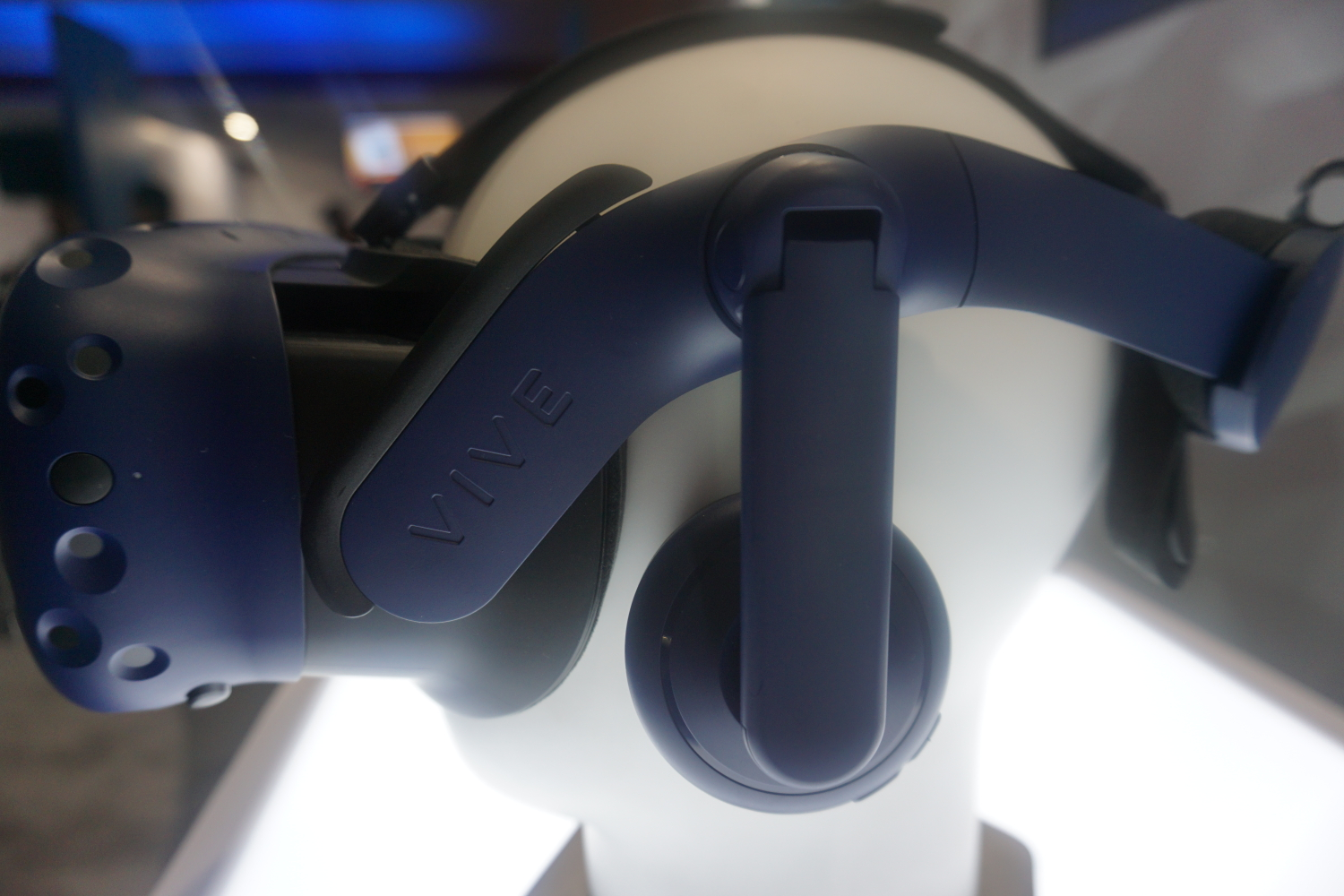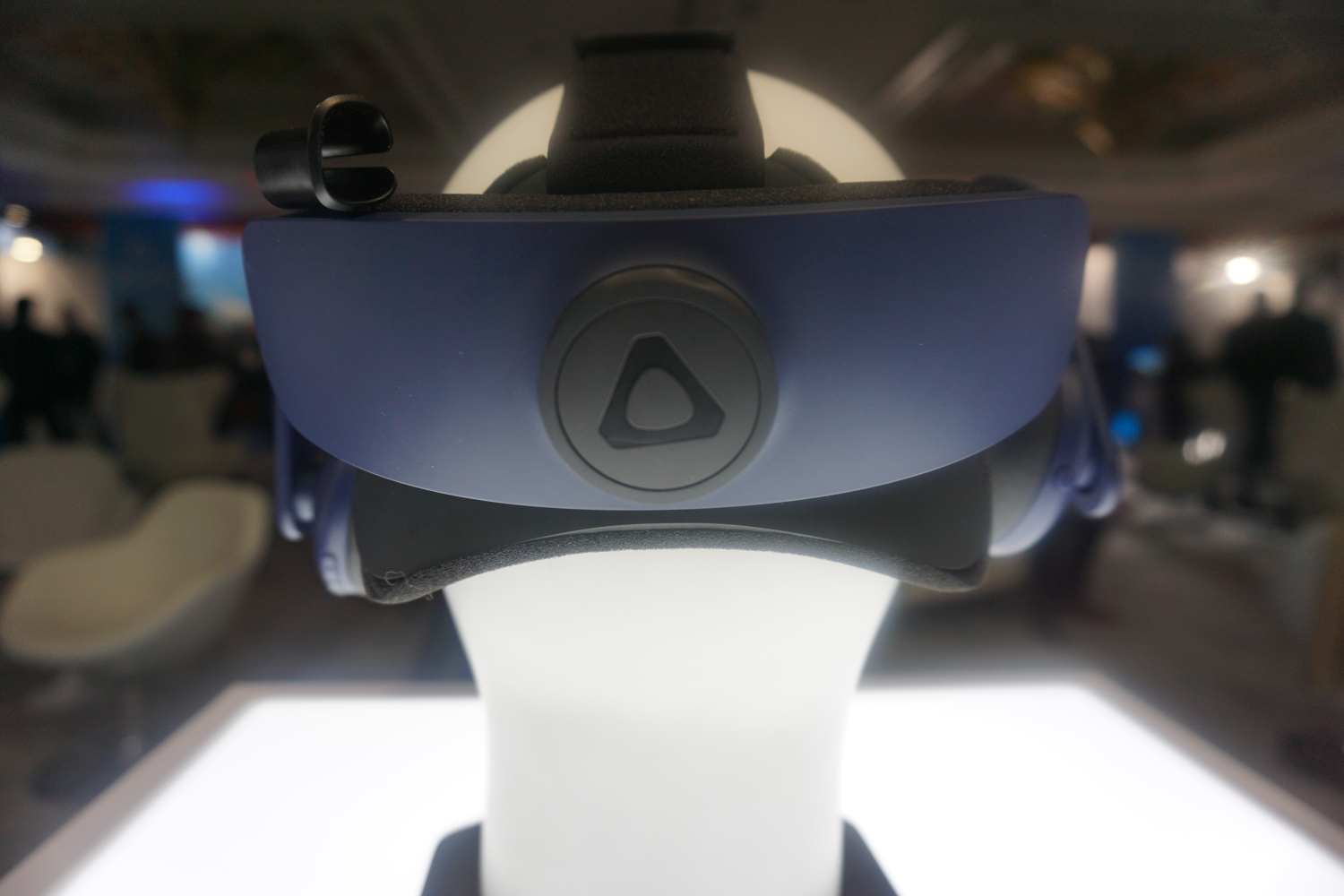HTC Vive Pro Eye Hands-On: Feeling Powerful With Built-In Tobii Eye Tracking (Update)
Update 6/6/2019: The HTC Vive Pro Eye was made available today at Vive.com and select retailers, priced at $1,599. The headset will include the options for users to send HTC Vive feedback through heatmapping and gaze tracking, providing HTC Vive “insight into user behavior and decision processes.”
We asked HTC VIve about whether this feature can be disabled. A spokesperson said it depends on the application and whether the developer created content that allows for that.
HTC Vive’s announcement also noted that the Vive Pro Eye uses foveated rendering to direct GPU efforts toward where the user is looking.
Original article 1/8/2019:



Hands are old news. VR navigation, control and selection is best done with the eyes--at least that’s what HTC Vive is banking on with the upcoming HTC Vive Pro Eye, a VR headset with integrated Tobii eye tracking initially targeting businesses. I tried out a beta version of the feature myself on MLB Home Run Derby VR. It’s still in development and, thus, was a little wonky, but I can’t deny its cool factor.
HTC announced the new headset Tuesday at the CES tech show in Las Vegas. The idea is that by having eye tracking built into the headset, better use cases, such as enhanced training programs, can be introduced. The VR player also says users can expect faster VR interactions and better efficiency in terms of tapping your PC’s CPU and GPU.
Of course, before my peepers could be tracked I needed to calibrate the headset for my special eyes. It was quite simple, after adjusting the interpupillary distance appropriately, the headset had me stare at a blue dot that bounced around my field of view (FOV). The whole thing took less than a minute.
Get Tom's Hardware's best news and in-depth reviews, straight to your inbox.
With the power of eye tracking, I was able to look at different menu options. Without the need to turn my head, not even for accessing items in the lowest parts of my FOV, I could place the cursor where I wanted just by staring at the desired location. When I maintained my gaze, a small circle appeared--in this case shaped like a baseball--and once the circle filled with color after a couple seconds, my selection was made.
I tried highlighting and selecting a few different menu options but only managed to properly select two. Sometimes I tried to stare at where I wanted to make my selection, but the cursor would drift out of the desired area before the game recognized my choice. However, I was told this is a beta and that the eye tracking should be more fluid upon the headset’s release in Q2.
While a lavish, futuristic-seeming feature, eye tracking can certainly come in handy with VR gaming. For example, in Home Run Derby, you play with a bat. With integrated eye tracking, there’s no need to switch between the bat and VR controllers to alter game modes or settings.
Plus, controlling things with your eyes is the superpower I didn’t know I wanted. It gave me an enhanced feeling of being in control and is as close to mimicking the telekinesis of Jean Grey’s from the X-Men without the occasional mind-splitting headaches (hopefully) that I've ever gotten.
I’d love to see how game developers create ways to use the eye tracking in actual gameplay. Imagine being able to look at a baseball and drive better accuracy with your bat, just like in real baseball (I could use the help, I managed a mere two home runs in 30 seconds). Or picture being able to take down a virtual opponent with your looks. If looks could kill, right?
HTC is staying mum on any other specs for the Vive Pro Eye at the moment. But I was told the main difference between the already-available HTC Vive Pro and upcoming HTC Vive Pro Eye is, indeed, the integrated Tobii eye tracking. So we’re expecting similar specs to that of the Vive Pro. Hopefully, though, the eye tracking won’t come at too much of a premium, especially considering the Vive Pro’s already ample $800 price tag. Otherwise, we're not so sure if the headset will make its way into practical, consumer VR gaming.

Scharon Harding has over a decade of experience reporting on technology with a special affinity for gaming peripherals (especially monitors), laptops, and virtual reality. Previously, she covered business technology, including hardware, software, cyber security, cloud, and other IT happenings, at Channelnomics, with bylines at CRN UK.
-
steven.gentile I'm assuming this resolves lower and higher IPD ranges then ? Seems the currently non eye tracking is built for those in a certain rangeReply -
daworstplaya The problem the current Vive Pro has is the god awful frenel lenses. The sweet spot is tiny and the god rays are horrible. Luckily the Gear VR lens mod fixes that issue. The sound quality from the headphone is also lacking in bass. Let's hope they fix those fundamental issues in the next HTC Vive Pro headset.Reply -
Giroro "We asked HTC VIve about whether this feature can be disabled. A spokesperson said it depends on the application and whether the developer created content that allows for that. "Reply
Are you sure that spokesperson knew what they were talking about? Maybe I'm misunderstanding but that response doesn't to jibe with my understanding on how the technology fundamentally works. It also sounds like something that would be illegal (at least in Europe). -
perfectdarksky I'm concerned regarding the data they collected by using the eye tracking. From this quote "We asked HTC VIve about whether this feature can be disabled. A spokesperson said it depends on the application and whether the developer created content that allows for that. " it seems that third parties and developers can gain access to the eye tracking data. Can Tobii eye tracking scan or capture the image of our Iris? Some smartphones or security devices are using Iris recognition to unlock the device, can the iris data be used to forge an imitation eye to unlock the device? Although it'll be tedious and expensive I'm sure many government agencies, companies, illegal organizations would be interested on these data.Reply